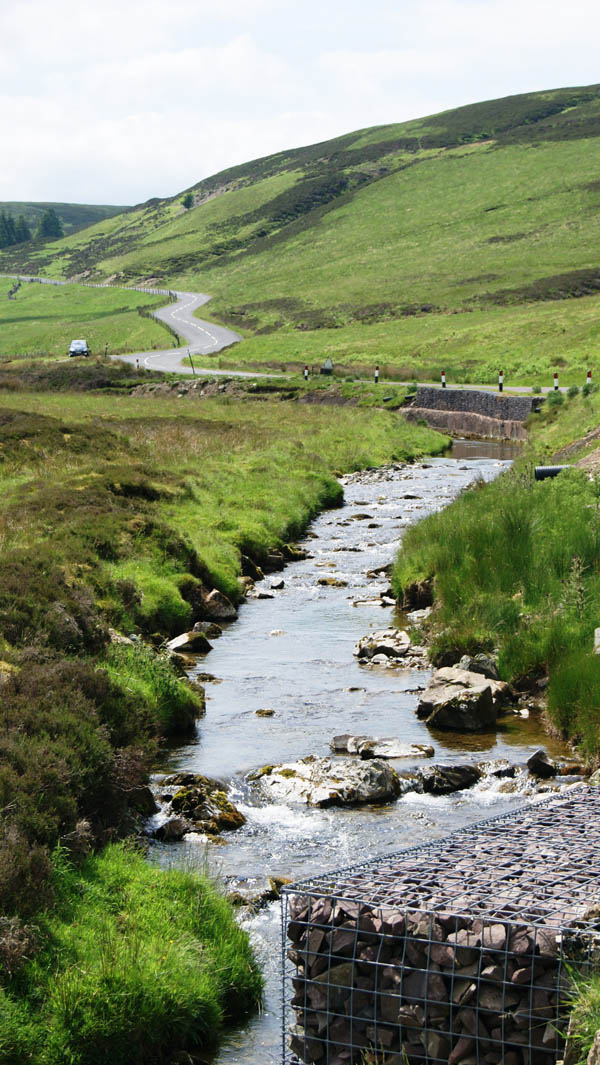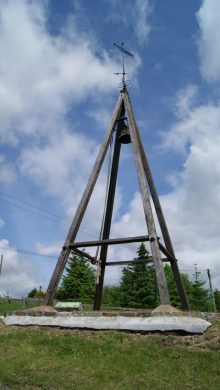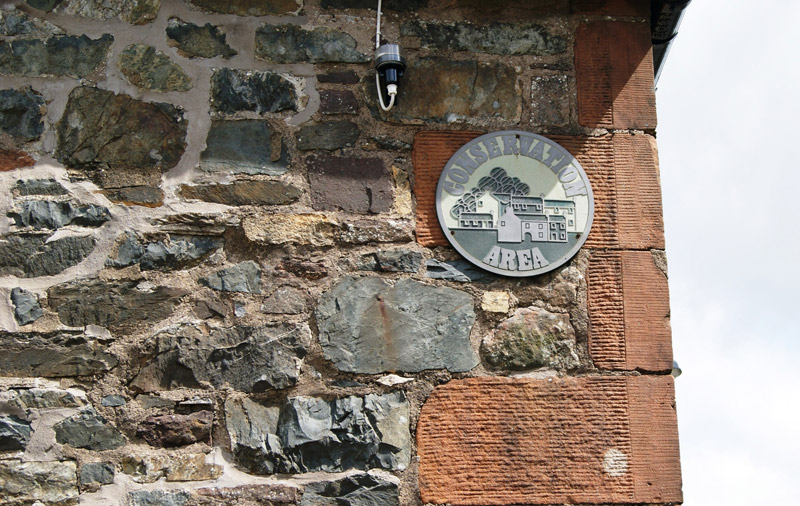The Leadhills Estate, lies high in the Lowther Hills of South Lanarkshire. The village of Leadhills, along with the neighbouring village of Wanlockhead on the Duke of Buccleuch’s estate are the highest villages in Scotland. The Leadhills-Wanlockhead mining district was the most important lead-zinc deposit in Scotland, having produce an estimated half a million tons of lead concentrates during over 300 years of continuous exploitation.
In the 16th Century Leadhills, then known as Crawford Muir, became important for the mining of gold. Mounds of debris or ‘gowd scaurs’ along the valleys of the Shortcleuch and Glengonnar waters testify to large scale working of the alluvial gravels during the reigns of James IV and V. Between 1538 and 1542, gold was obtained for the Scottish Regalia. Much of the gold coinage of the time including the ‘bonnet pieces’ of James V was produced from Crawford Muir. In 1560’s 120 men were employed but at one time as many as 300 were employed. About 1576, Thomas Foulis brought the minerals expert Bevis Bulmer, a Yorkshireman, to work his lead mine. Bulmer soon turned his attention to gold and continued the workings between 1578 and 1592. He made a search for the quartz veins from which the alluvial gold was thought to derive. Part of the estate is still called Bulmer Moss. Bulmer is said to have built a house at Glengonnar near Lettershaws. Given the troubles from thieving at the time, this may have been a fortified dwelling or bastle house like the remains of others on the Leadhills Estate at Glenochar (where there is a visitor trail), at Glengeith and at Glendorch.
There were few commercial attempts to work the gold after Bulmer’s day. However, the working for gold became a pastime of the lead miners particularly from the 1860s onwards. In 1862, over two weeks, miners collected 975 grains for the Countess of Hopetoun. During the strike of 1921, miners again worked for gold; the most successful being John Weir and John Blackwood. Today, enthusiasts pan for gold. Licenses are obtained from the Estate. → Gold Panning
While lead was mined at least as early as 1239 by the monks of Newbattle, the mining of lead was probably intermittent until the 1570s when Thomas Foulis, goldsmith in Edinburgh, began to work the mines on a scale hitherto unknown. So successful was he that in 1592 he purchased the land at Leadhills, or Waterheid as it was originally known. Eventually, in 1637, Thomas Foulis’ granddaughter Anna became the sole heiress of the mines. A near relative of Anna Foulis laid claim to the mines and she had to resort to the Court of Session to make good her claim. She employed as her lawyer, Mr James Hope. Not only did this result in the winning of the case for his client, but in his marriage to Anna in the following year. Thus it was that in 1638, the mines passed to the Hope family. At this time, Leadhills became known as ‘Hopetoun’ until the name was transferred to the new mansion house at South Queensferry completed in 1699. James Hope attained considerable skill in mining and mineralogy and his expertise resulted in his appointment as Master of the Mint in 1641. In 1661 a grant of the mines to Sir James Hope was ratified by Act of Parliament.
Allan Ramsay, the poet, was born in Leadhills 1686, son of Robert Ramsay Lord Hopetoun’s mines overseer. He was the father of Allan Ramsay, the portrait painter.
Most of the mines were leased to various companies, the most successful being the Scots Mining Company whose lease was renewed in 1730. The company was not doing well until James Stirling was appointed manager in 1734. With the support of John, 2nd Earl of Hopetoun, he reorganised the running of the mines and made them profitable.
About 1735, the small mansion known as the Scots Mining Company House was built for Stirling which, along with its surrounding garden landscape, was designed by William Adam who was also at the time working on Hopetoun House. The Scots Mining Company House is now a Category ‘A’ listed building and, with the garden, is recognised as being of national significance.
Stirling encouraged the miners to found the Leadhills Miners’ Library in 1741, which was the first circulating and working class library in Britain. Many of the books were presented by the Hope family and the Scots Mining Company. Though no longer a lending library, it continues to play a part in the Leadhills community. (Miners Library photo)
When James Stirling died in 1770 the Scots Mining Company erected the Curfew Bell in the village of Leadhills. The bell was an integral part of the mining industry, it was rung to inform the miners of shift changes and to summon the children to school. It was also used as a warning if there accidents in the mines or walkers were lost in the hills. It still stands in the village today (see photograph) but is used only once a year to ring on the New Year.
Another well known local passed away the same as year as James Stirling. John Taylor, miner, born in Alston, Cumbria in 1637, died at Leadhills in 1770 at a grand age of 133 years! He is buried in the graveyard at Leadhills.
During 18th Century about 40 lead veins were being worked to some extent, the richest being the Susanna Vein. The mines, and in particular, the Susanna Mine, were a technological wonder of 18th Century Scotland in terms of the scale of the enterprise, machinery employed and investment. Leadhills is famous worldwide for rare mineral species, leadhillite, caledonite, lanarkite and susannite, first discovered in the Susanna Mine.
Decline in mining started from about 1830. Litigation between the Scots Mining Company and the Leadhills Mining Company over water rights to drive the hydraulic machinery which lasted for 20 years resulted in the main company giving up its lease and the Leadhills Mining Company taking over the entire field in 1861. Capital re-investment in the mines ensued. However, by the 1920s, only Brow and Brown’s veins were being worked from Glengonnar and Wilson’s shafts. Lady Anne Hopetoun Shaft was brought back into operation in 1917 and the Wembly Shaft sunk 1925-28 on Mill Vein and a crosscut at 450 ft depth driven to explore a number of veins. The Leadhills mines eventually closed in 1929 due to impoverishment of the vein.
In 1772 Leadhills had a population of 1500. In 1878, there were 253 houses originally built by the miners and dating back to the 18th Century. The houses were thatched with heather until, between 1861 and 1878, 220 were rebuilt and the thatch replaced with slate. By the 1870s, some 394 acres of open hill land had been reclaimed by the miners which produced good crops of hay and potatoes. Over 100 cows were kept.
In 1989 Clydesdale District Council designated the village of Leadhills a conservation area in order to enhance its special architectural and historic interest.




